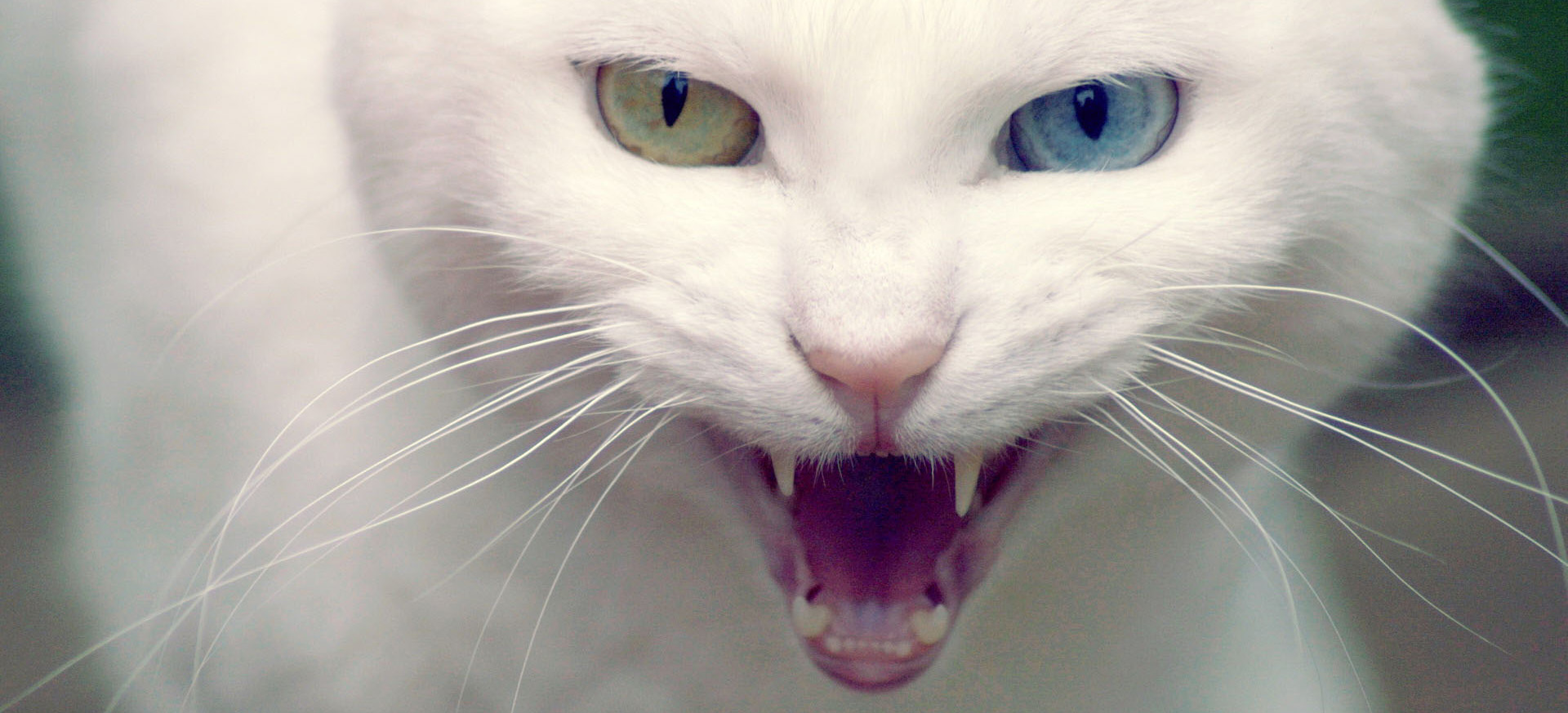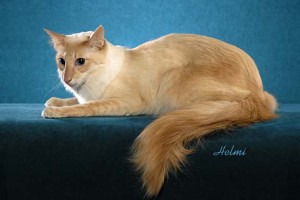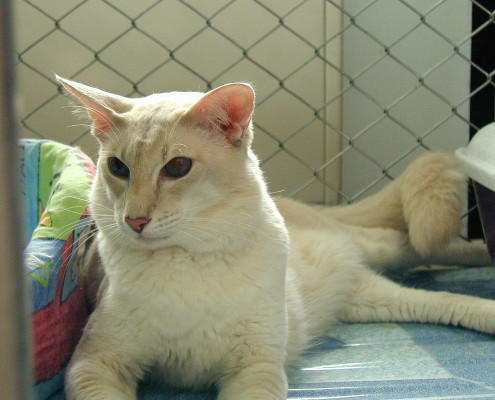Javanese Cat

Meoww!!
Javanese cats require a great deal of love and attention. While they can withstand being alone during the day, they need one-on-one time with their owners on a daily basis. Their coats do not mat because they lack the downy undercoat, so less brushing is required than for most other cat breeds.
In 5 Words
- Slender
- Intelligent
- Affectionate
- Loving
- Serious
Snapshot
WEIGHT RANGE:
Male: medium: 8-12 lbs.
Female: small: <8 lbs.
EYE COLOR:
Blue, Green
EXPECTATIONS:
Longevity Range: 8-12 yrs.
Social/Attention Needs: Moderate
Tendency to Shed: Low, Moderate
COAT:
Length: Short
Characteristics: Smooth
Colors: Red, Cream, Seal, Chocolate, Blue, Lilac, Blue-cream, Lilac Cream
Pattern: Tabby, Shaded
Less Allergenic: No
Overall Grooming Needs: Moderate
CLUB RECOGNITION:
Cat Association Recognition:
CFA, FIFe
Prevalence: Rare

Characteristics
Learn About the Javanese Cat
The Javanese cat is not from Java nor Indonesia. Genetically they are long-haired Oriental.”. The term “Javanese cat” was coined by a Helen Smith of MerryMews Cattery circa 1950. Javanese breed was developed from crossing the Siamese with Colorpoint Shorthair and Balinese cats.In the United States the Javanese is simply a Balinese cat of colors other than Balinese colors. In Europe, Javanese is the name given to what the British call the Angora. The cats do not actually come from Java but were whimsically given the name because Java is a sister island to Bali, which was a nice touch, given the breed’s relationship to the Balinese (which does not come from Bali, by the way). . The Javanse standard is identical to that of the Balinese – a cat of Siamese type with long flowing coat, the only difference being in the colors accepted for championship competition.The first breeders known to maintain and promote this beautiful long-haired cat breed were Marion Dorsey of California and Helen Smith of New York, who become active in the breed in the 1960′s.
The Javanese catare medium-sized and have fine bones and firm shoulders.These breed is similar in appearance to the Siamese, with a longer, slender body. They normally have blue eyes and a head that is wedge shaped in appearance. The coat is different then the Siamese, being long and silky. The coat is usually of a medium length with a plumed tail. . The muzzle is long and the nose has no stop.. Their markings can vary from a soft sprinkling of red and cream on a background of seal, blue, chocolate or lilac, to bold splashes of color, sometimes creating a clown-like appearance.
Javanese cats, like their Balinese relatives, are playful, devoted, and always eager to tell you their views on life, love, and what you’ve served them for dinner. Javanese (and their Siamese relatives) have a fascination with food, and, while some will burn off the extra calories in playful antics, care must be taken that the less active don’t turn into butterballs.Known for their curiosity, intelligence, and excellent communication skills, the Javanese breed is perfect if you want a responsive, interactive cat, one that will blow in your ear and follow you everywhere. They are very playful, especial as younger cats, as older cats they may be less playful but more affectionate seeking to simply sit on their owner and purr as affection is lavished on them.Javanese cats love to play games with their owners and enjoy games of fetch.
Both pedigreed cats and mixed-breed cats have varying incidences of health problems that may be genetic in nature. The same problems that may affect the Siamese can also affect the Javanese, including the following:
Amyloidosis, a disease that occurs when a type of protein called amyloid is deposited in body organs, primarily the liver in members of the Siamese family:
- Asthma/bronchial disease
- Congenital heart defects such as aortic stenosis
- Crossed eyes
- Gastrointestinal conditions such as megaesophagus
- Hyperesthesia syndrome, a neurological problem that can cause cats to excessively groom themselves, leading to hair loss, and to act frantically, especially when they are touched or petted
- Lymphoma
- Nystagmus, a neurological disorder that causes involuntary rapid eye movement
- Progressive retinal atrophy,
It is recommended to have annual veterinary checkups.
The fine, silky coat of the Javanese is easily cared for. Comb it once or twice a week with a stainless steel comb to remove dead hair. A bath is rarely necessary.
Brush the teeth to prevent periodontal disease. Daily dental hygiene is best, but weekly brushing is better than nothing. Wipe the corners of the eyes with a soft, damp cloth to remove any discharge. Use a separate area of the cloth for each eye so you don’t run the risk of spreading any infection. Check the ears weekly. If they look dirty, wipe them out with a cotton ball or soft damp cloth moistened with a 50-50 mixture of cider vinegar and warm water. Avoid using cotton swabs, which can damage the interior of the ear.
There is no undercoat, so brushing once in a few weeks should be fine.






